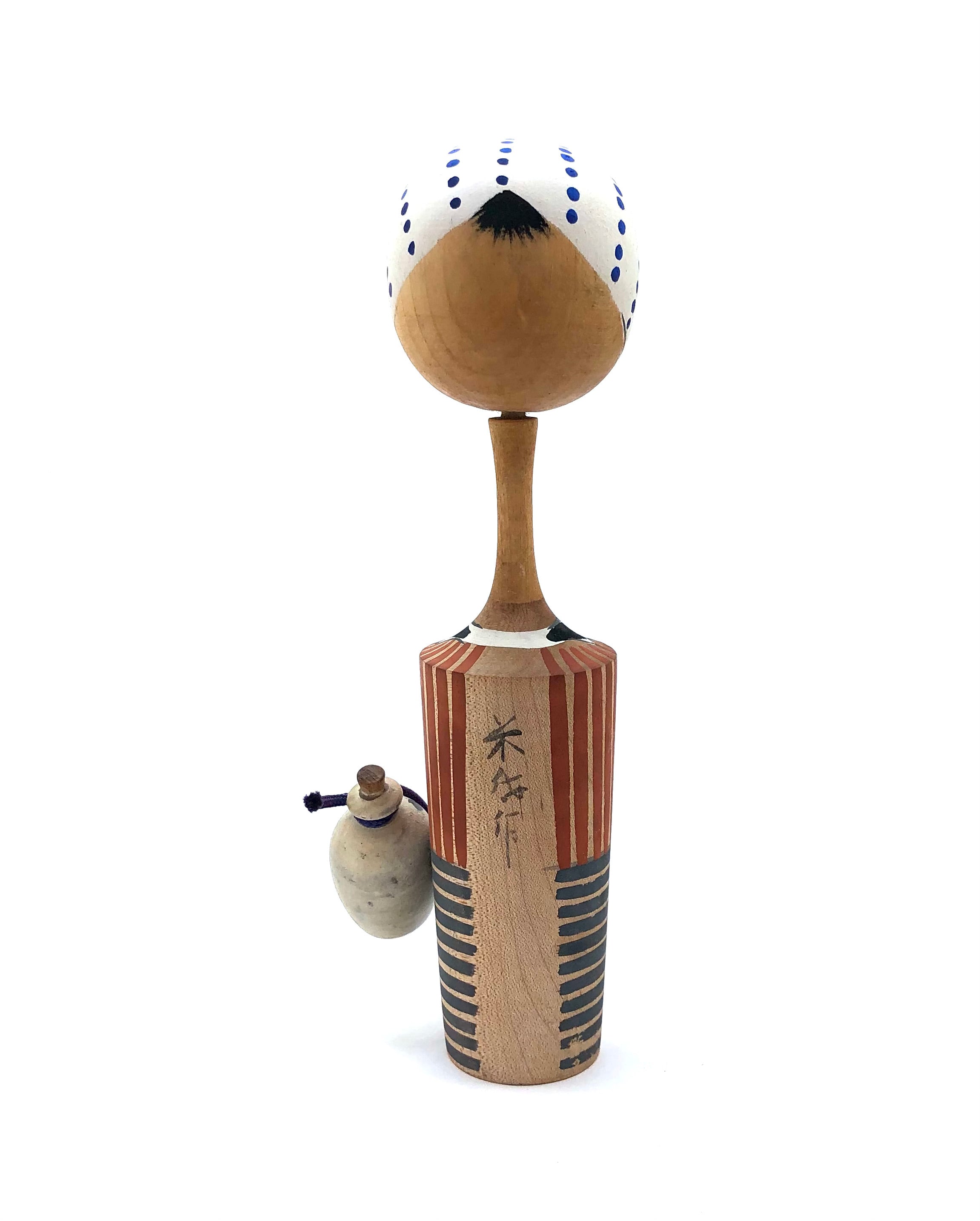

Vintage Sosaku Kokeshi entitled: Ohara Shosuke by Kikuchi, Shukou | 1950-
Dimensions: 7-1/2”h
This beautifully detailed and painted Kokeshi depict one of Japan’s many folk heroes, Ohara Shosuke, who lived in Aizu Wakamatsu City in Fukushima Prefecture. He has been immortalized in folklore and song, as a great lover of sake and wasted all his fortune and wealth. Shosuke could not say no to helping people in need and if he could be of any help, he was present and ready to give all he had to be it money, time or for example, providing well-needed training to entrepreneurial women in need of income. His acts of kindness are as well-known as his love for Sake. There are several moral messages from his story that is summed up by the Japanese that lead to indulging in any of these 3 activities and can lead to financial ruin and failure: over indulgence, over sleeping, and too much time in the baths.
Here Ohara Shosuke is pictured wearing a brown, gray and black striped Haori and Hakama, (jacket and pants) with small white, red and green accents forming his garment. He is always depicted with a wrapped head in a Tenugui, (plain cloth or rag with blue polka-dots), and carrying his jug, which is decorated with calligraphy. He has bobble type’, which is appropriate for this character which that allows it to move back and forth. His face is very simple, with a stern expression. And finally of course he is carrying his sake jug which completes the image of this character. This doll shows the diversity of this cultural specialization and the creative work produced by this artist. The piece is signed on the back by the artist.
Vintage Condition: Excellent, unrestored and completely intact and retains the original craft/workmanship. The piece meets all the standards of collectible Folk Art.
NOTE: Historically, the Japanese have been a very modest people. Japanese artists, in particular, felt their work spoke for them, and so for centuries, creative efforts by many artists, with the exception of woodblock prints, were unsigned, yet were easily recognized by the public through a specific style and the artists’ unique personalities. As collectors we felt it was most important to represent all Sosaku Kokeshi, whether or not the artist biography has been identified or a written account of this artist’s life has been published.

Artisan
Woodworker: Kikuchi, Shukou
1950
Biographical History:
As collectors, we felt it was most important to represent all Sosaku Kokeshi artists, whether or not each artist has a written account of his/her life. We show the diversity of cultural values and the creative work produced by a multitude of artists.
In researching old writings through articles and books that remain, it is evident that the Kokeshi Craftsperson not only created beautiful forms as toys, but also kept alive cultural values, customs, and fashion through the extensive representations of Kokeshi dolls. The beauty is in the doll and not the signatures, for most masters never signed their dolls. Later they named the dolls, but only when Westerners insisted on signatures because they did not know the artists, so the carvers began to sign their works, for the carvers wanted to promote sales to make a living, during the seasons that did not provide an environment to continue their otherwise daily work.
Collector's note – descriptive qualities, standard characteristics & ornamentation styles:
These beautifully detailed and painted Kokeshi depict one of Japan’s many folk heroes, Ohara Shosuke, who lived in Aizu Wakamatsu City in Fukushima Prefecture. He has been immortalized in song as a great lover of sake. Typically, Shosuke-san is pictured wearing a brown and black striped Yukata and Haori with a small splash of red peeping out of his garment. He is always depicted with a wrapped head of white Tenugui, (plain cloth or rag), with blue polka-dots, and carrying his jug, which is decorated with calligraphy. His face is very simple, with a stern expression.
Explore & Learn More about Woodworker: Kikuchi, Shukou